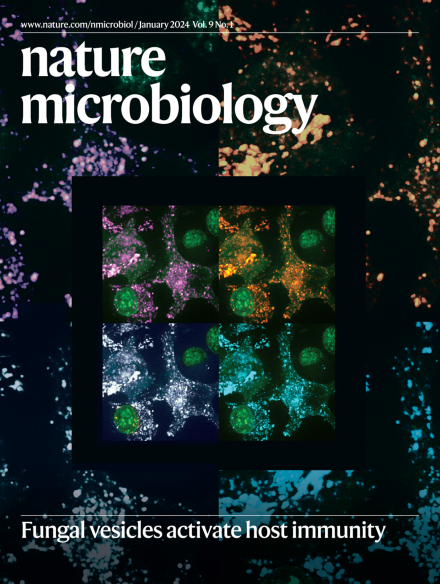在非抑制性病毒血症患者中,重复感染促进有缺陷的HIV-1原病毒的复制和多样化。
IF 19.4
1区 生物学
Q1 MICROBIOLOGY
引用次数: 0
摘要
在一些RNA病毒的复制过程中,缺陷颗粒可以自发产生并干扰野生型(WT)病毒的复制。然而,这些有缺陷的干扰颗粒(dip)在HIV-1 (PWH)患者中尚未报道。在这里,我们发现具有罕见的多克隆形式的非抑制性病毒血症(NSV)的PWH中的dip。我们描述了两名尽管坚持抗逆转录病毒治疗(ART),但从未达到检测不到病毒载量的PWH的非NSV来源。值得注意的是,在每个参与者身上,我们发现了一组不同的缺陷病毒基因组,它们共享相同的致命缺失。具有致命缺陷的病毒的这种矛盾的突变积累是由完整病毒的重复感染驱动的,导致在未经治疗的感染期间动员有缺陷的基因组和积累额外的突变。这些有缺陷的原病毒干扰WT病毒复制,有条件地复制,在一种情况下,具有R0 bb0 1,使体内传播成为可能。尽管如此,临床结果显示这些dip没有任何有益的作用。这些发现表明,有致命缺陷的原病毒,传统上被认为是进化的死胡同,可以在重复感染时复制和多样化,而不阻止疾病进展。本文章由计算机程序翻译,如有差异,请以英文原文为准。
Superinfection promotes replication and diversification of defective HIV-1 proviruses in people with non-suppressible viraemia.
During replication of some RNA viruses, defective particles can spontaneously arise and interfere with wild-type (WT) virus replication. However, these defective interfering particles (DIPs) have not been reported in people with HIV-1 (PWH). Here we find DIPs in PWH who have a rare, polyclonal form of non-suppressible viraemia (NSV). We characterized the source of NSV in two PWH who never reached undetectable viral load despite adherence to antiretroviral therapy (ART). Remarkably, in each participant, we found a diverse set of defective viral genomes sharing the same fatal deletions. This paradoxical accumulation of mutations by viruses with fatal defects was driven by superinfection with intact viruses, resulting in mobilization of defective genomes and accumulation of additional mutations during untreated infection. These defective proviruses interfere with WT virus replication, conditionally replicate and, in one case, have an R0 > 1, enabling in vivo spread. Despite this, clinical outcomes showed no beneficial effect of these DIPs. These findings demonstrate that fatally defective proviruses, traditionally considered evolutionary dead ends, can replicate and diversify upon superinfection without preventing disease progression.
求助全文
通过发布文献求助,成功后即可免费获取论文全文。
去求助
来源期刊

Nature Microbiology
Immunology and Microbiology-Microbiology
CiteScore
44.40
自引率
1.10%
发文量
226
期刊介绍:
Nature Microbiology aims to cover a comprehensive range of topics related to microorganisms. This includes:
Evolution: The journal is interested in exploring the evolutionary aspects of microorganisms. This may include research on their genetic diversity, adaptation, and speciation over time.
Physiology and cell biology: Nature Microbiology seeks to understand the functions and characteristics of microorganisms at the cellular and physiological levels. This may involve studying their metabolism, growth patterns, and cellular processes.
Interactions: The journal focuses on the interactions microorganisms have with each other, as well as their interactions with hosts or the environment. This encompasses investigations into microbial communities, symbiotic relationships, and microbial responses to different environments.
Societal significance: Nature Microbiology recognizes the societal impact of microorganisms and welcomes studies that explore their practical applications. This may include research on microbial diseases, biotechnology, or environmental remediation.
In summary, Nature Microbiology is interested in research related to the evolution, physiology and cell biology of microorganisms, their interactions, and their societal relevance.
 求助内容:
求助内容: 应助结果提醒方式:
应助结果提醒方式:


